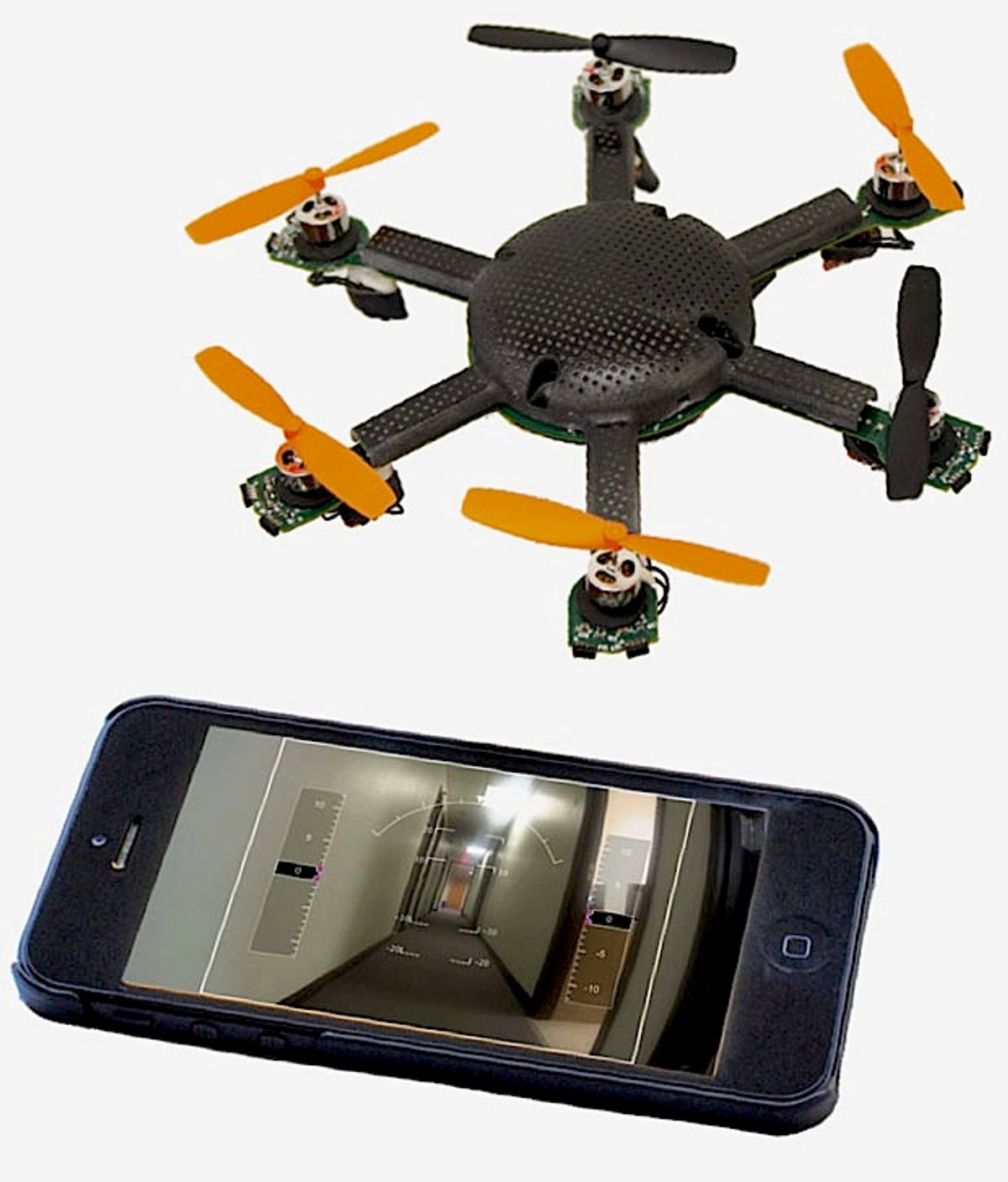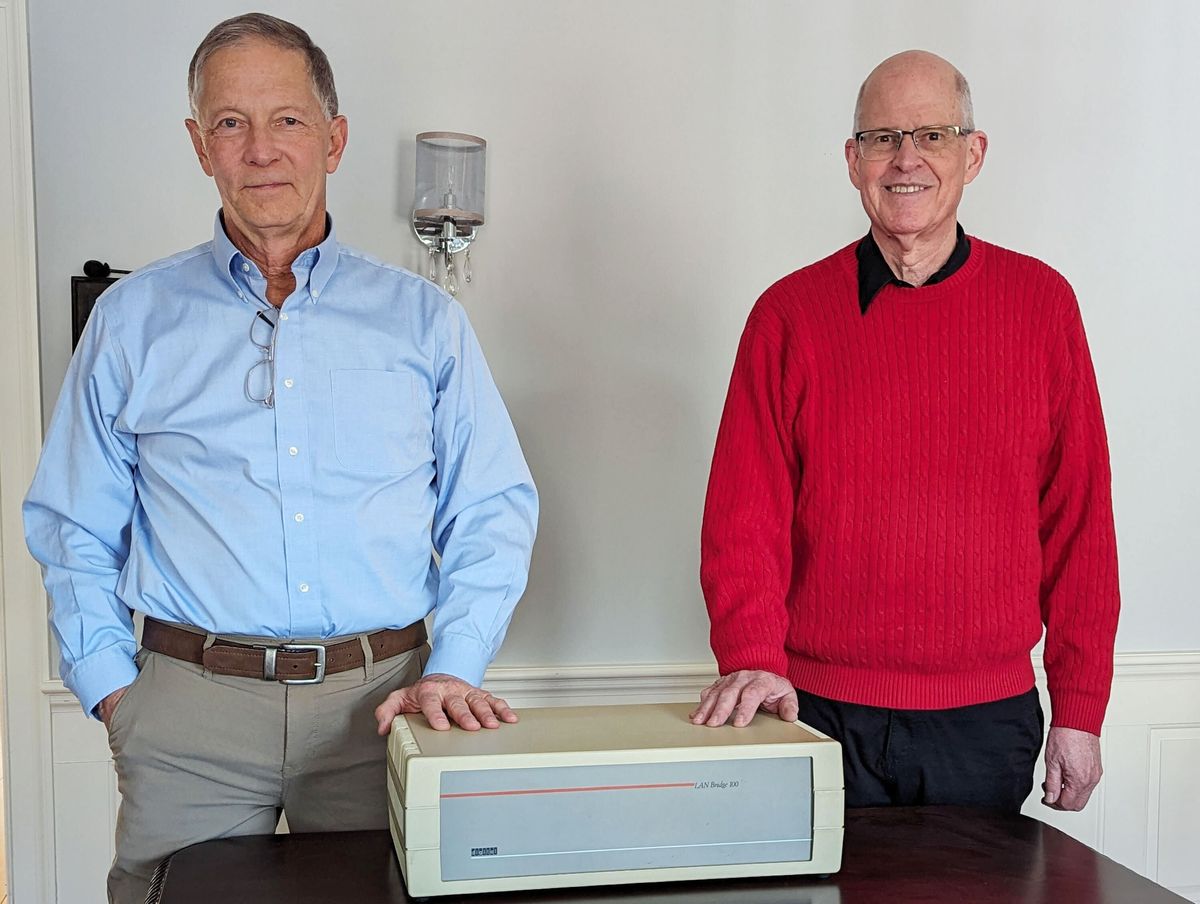Anybody who’s ever flown a rotary wing drone will look at the stats of CyPhy Works’ new Pocket Flyer drone and be amazed. It fits in your pocket and weighs a mere 80 grams. It’ll fly continuously for two hours or more, sending back high quality HD video the entire time. What’s the catch? There isn’t one, except for the clever thing that grants all of CyPhy’s UAVs their special powers: a microfilament tether that unspools the drone and keeps it constantly connected to communications and power.
CyPhy Works had the brilliant idea of bringing a thing back to robots that has (or had) a reputation of being somewhat of a crutch: a tether. Ideally, your robots would be efficient enough to be able to run on batteries, completely independently. And for ground robots, that’s usually not too hard to do, since they’re not fighting gravity all the time. With flying robots, though, endurance is a serious problem. Anything that can run on batteries (and hover) is probably only going to be aloft for 10 or perhaps 20 minutes at best.
As CyPhy Works founder and CEO Helen Greiner told IEEE Spectrum, “That’s about enough time to go into a building and find a person, and then ‘Oh, our robot went dead.’ ” The microfilament, in contrast, provides a constant source of power to your robot, so you can fly any drone that uses the system until your base station (which doesn’t have to move) runs out of power. If you’re plugged into the grid, these robots could stay aloft for days.
Power may be the primary reason why the Pocket Flyer uses a microfilament thether, but there are a bunch of other reasons why it’s a good idea. You get high definition video with no lag. You can put a lot of obstacles between you and your drone without having to worry about losing communications. And, you’re protected from malicious people trying to mess with your drone, as Greiner explains:
“If you see these wireless systems, you can look at the signal, and potentially take control of the vehicle. If you’re not that technologically sophisticated, you can actually just put noise into the environment and jam the signals, and the drone will lose control. The microfilament is impervious to that.”
The reason that a microfilament works at all in applications like these is that it unspools from the robot, and not from the base station. The robot carries a spool of 250 feet (76 meters) of wire onboard, and feeds it out as it moves forward. This way, there’s never any tension on the wire, and it can snag on stuff without affecting the performance of the robot.
Here’s a video of a prototype of the Pocket Flyer in action: if you look closely, you can barely see the microfilament tether unspooling:
Why was it necessary for CyPhy Works to come out with a brand new drone that’s so tiny? For soldiers in the field, Greiner says, it’s all about making sure that they’re able to have a drone with them:
“We took [our robots] to special forces and IED guys, and they loved them, they wanted them, but the feedback that we also got was, ‘We’d like to carry it more easily.’ It fits into a backpack, and that’s great, but what are you going to leave out of the backpack? They need all this stuff. The Pocket Flyer fits in a cargo pants pocket. The best robot is the one you have with you. And that’s exactly what this robot will be; it’ll be the one you have with you when you get to that dangerous situation. You don’t know when to expect these things, so you’ll need this robot always with you.”
Here’s the complete kit for Pocket Flyer. For scale, note the drone and smartphone in the top pic. The drone fits entirely inside the case.
The case has the battery for the drone at the top, and a control base station that the microfilament is connected to. User control is through a touchscreen device like phone or a tablet, running whatever OS happens to be on it. The idea here is that the drone control software will just be another app on a phone or tablet that a soldier would be carrying with them anyway, so as not to add to their load. Once the drone completes its mission, you can replace the microfilament spooler cartridge with a new one, recharge the base station if necessary, and go again. By hot-swapping base station batteries, or connecting to the grid, the Pocket Flyer can keep aloft even longer.
As you can tell from the video, Pocket Flyer is currently a functional prototype, but CyPhy Works is starting on the production version now, under a U.S. Air Force Rapid Innovation Fund contract, with the hope of getting it into the hands (and pockets) of soldiers who need it as quickly as possible.
[ CyPhy Works ]
Evan Ackerman is a senior editor at IEEE Spectrum. Since 2007, he has written over 6,000 articles on robotics and technology. He has a degree in Martian geology and is excellent at playing bagpipes.



